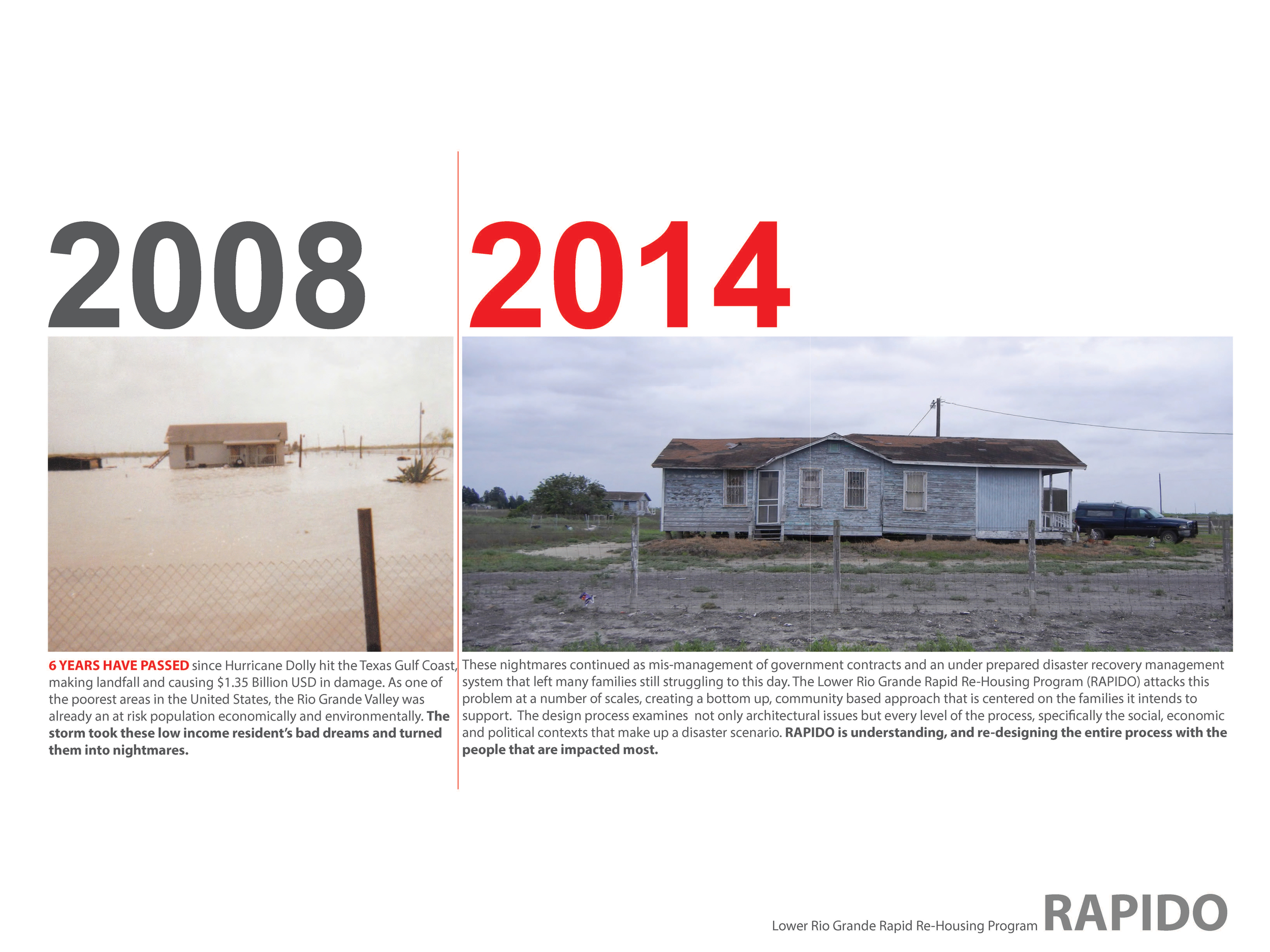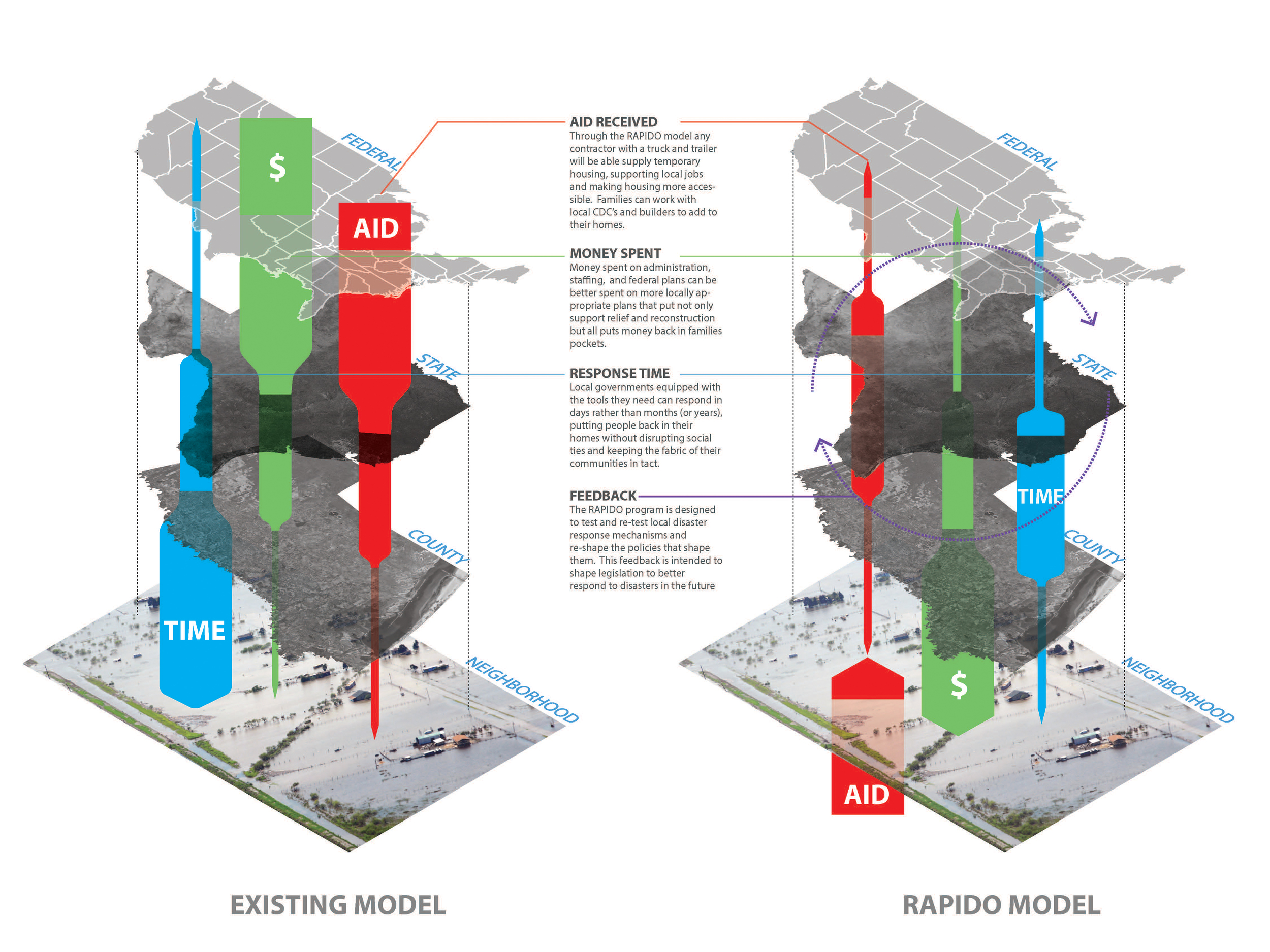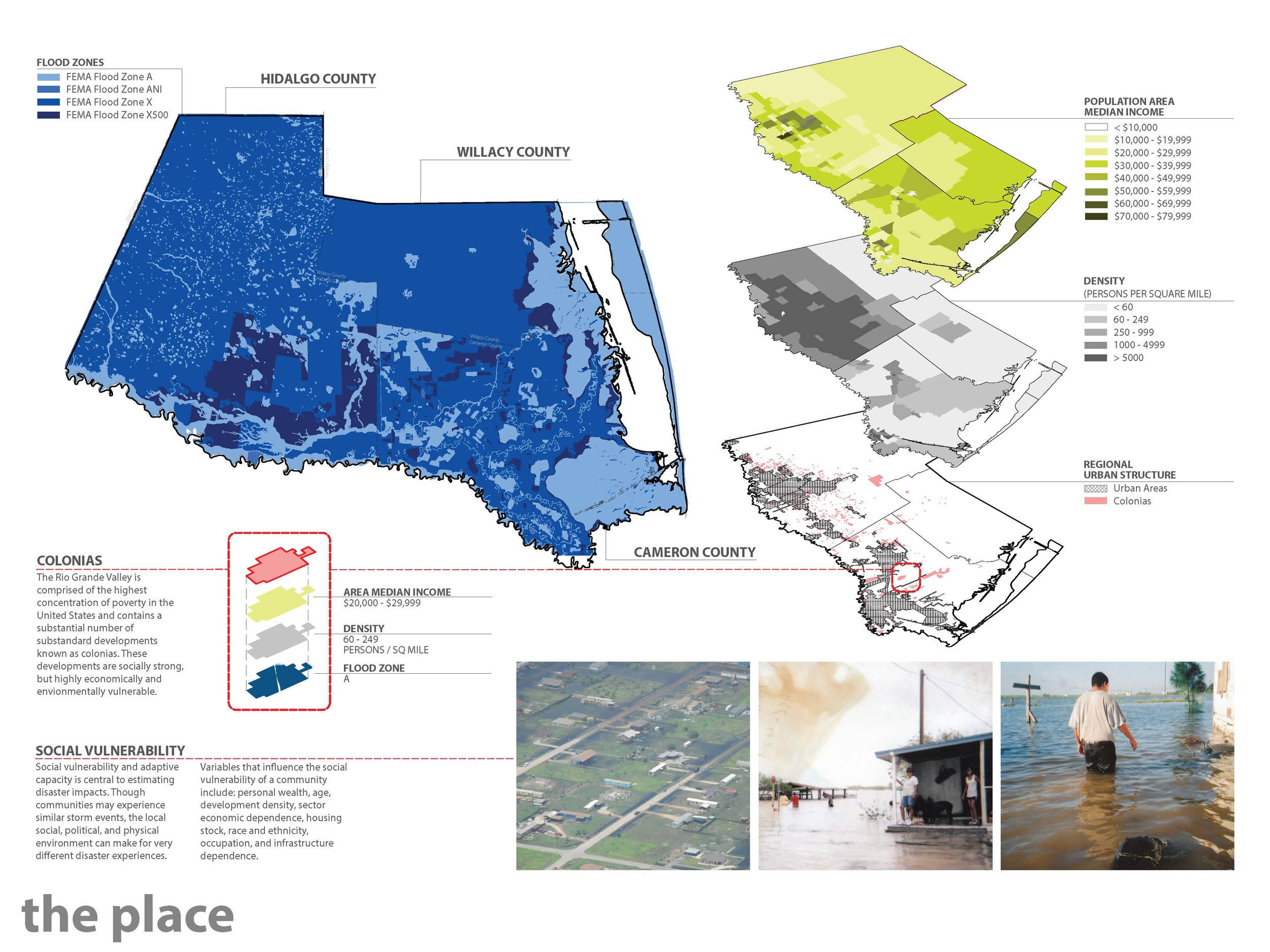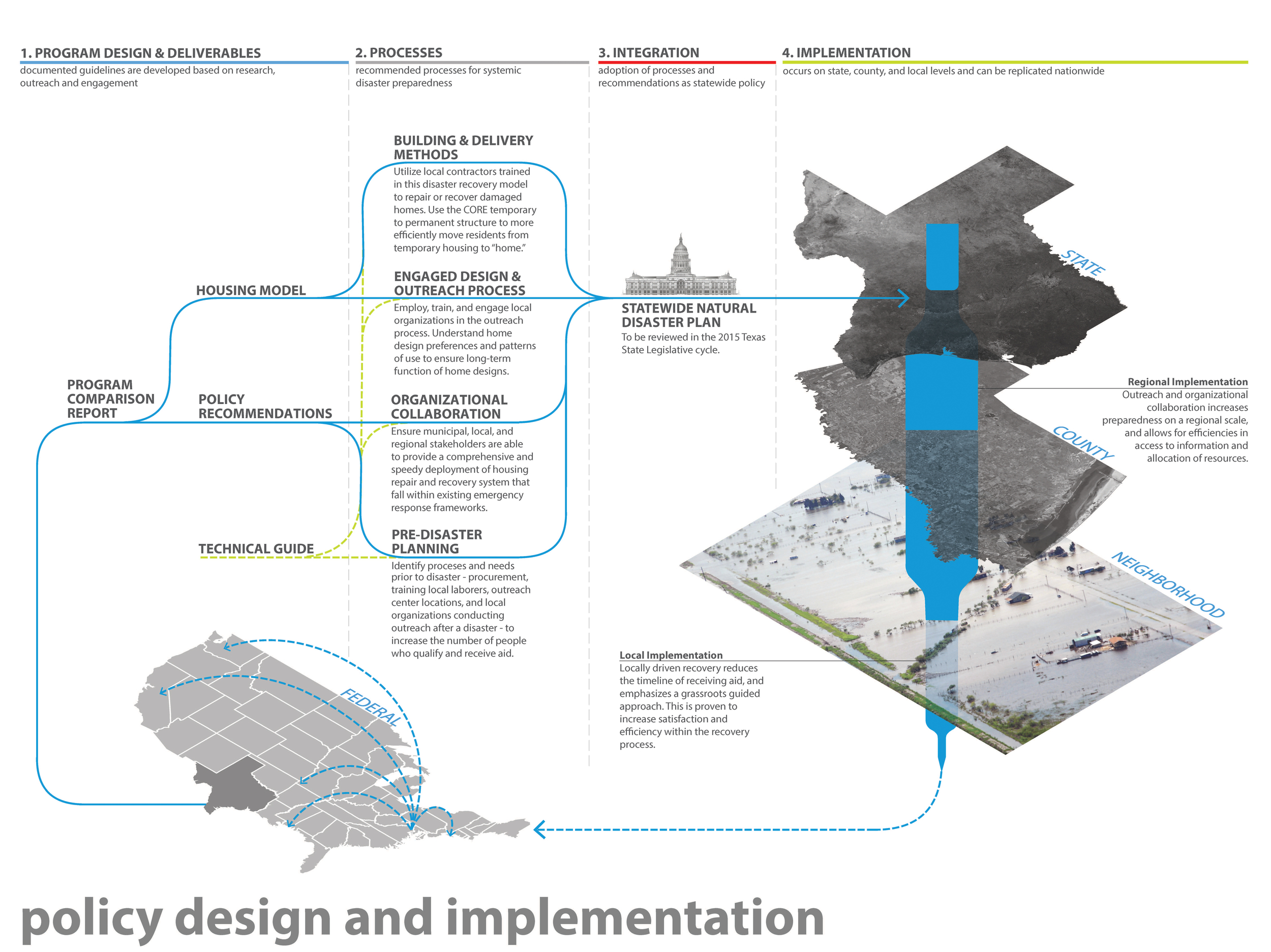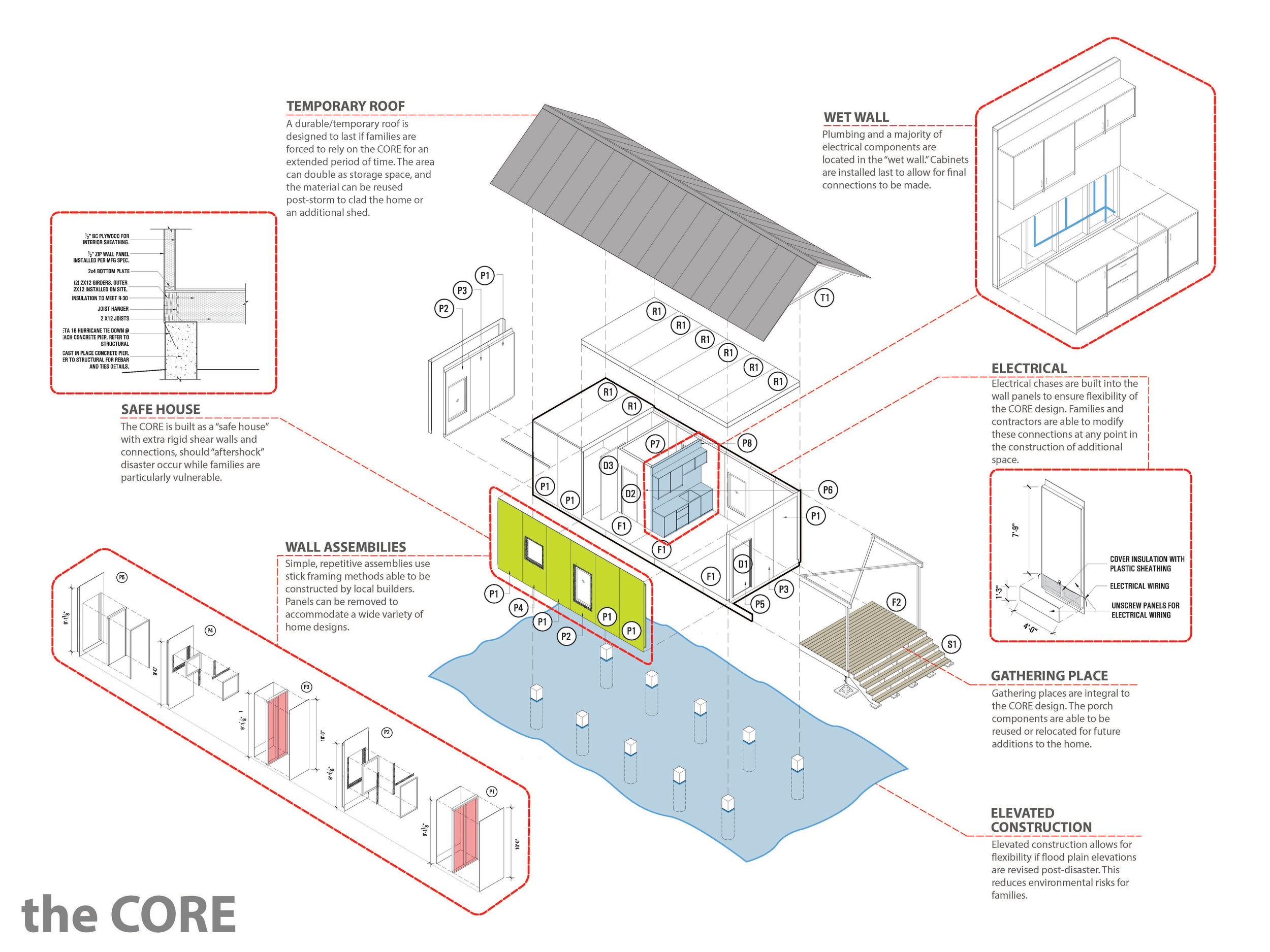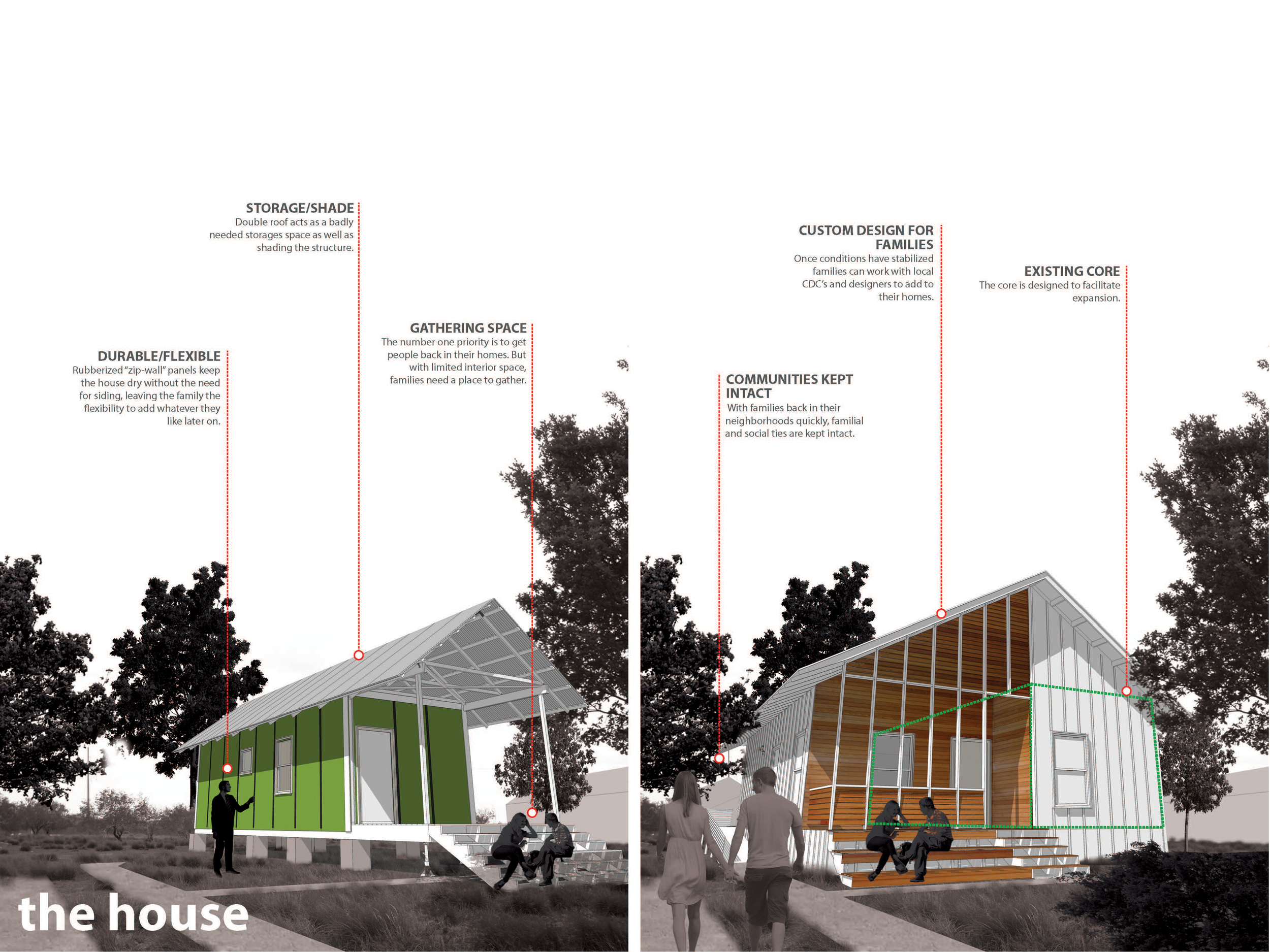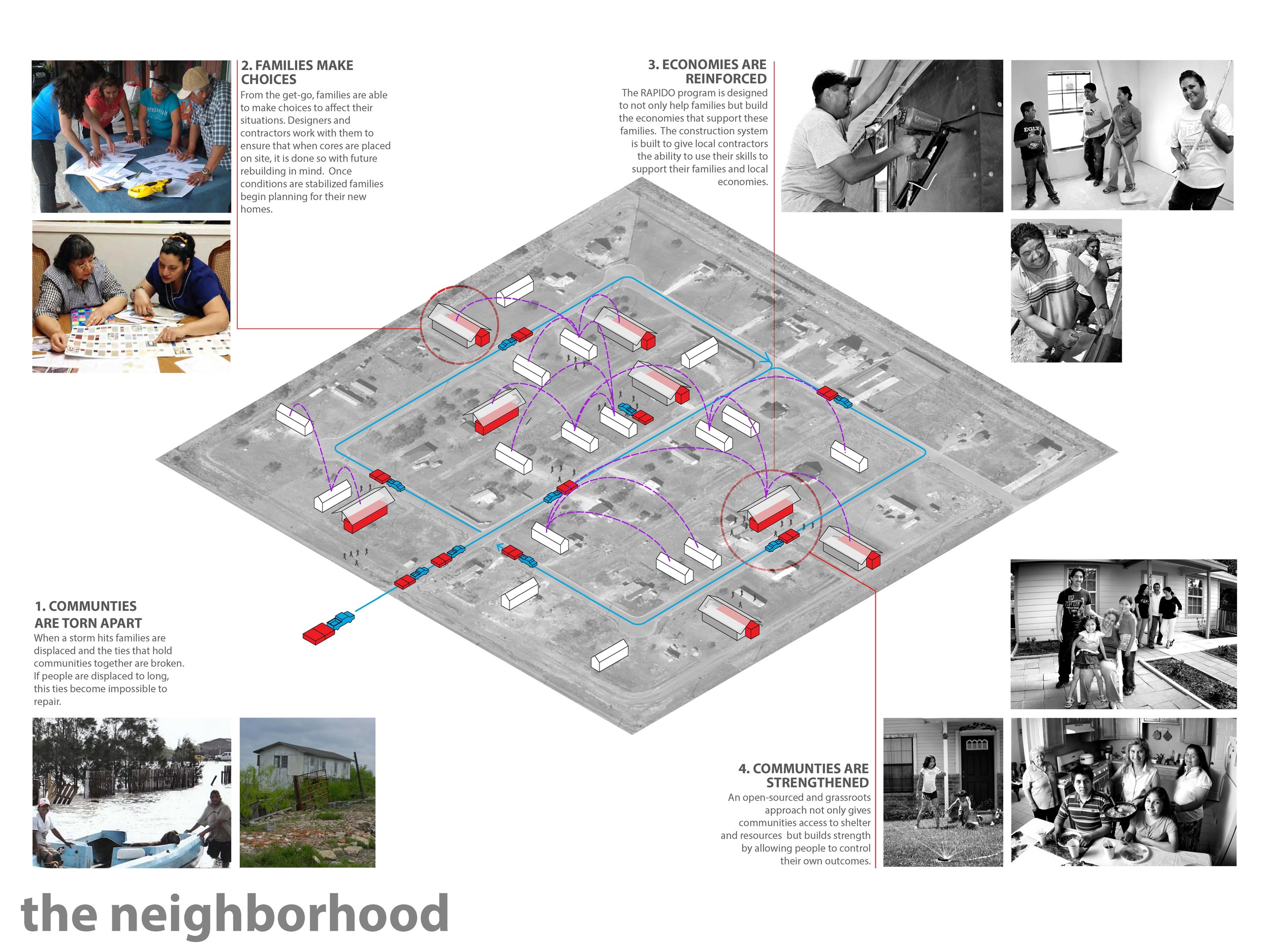Learn more about Rapido.
Check out the slides below and learn more about what's new with Rapido!
6 years have passed since Hurricane Dolly hit the Texas Gulf Coast, making landfall and causing $1.35 Billion USD in damage. As one of the poorest areas in the United States, the Rio Grande Valley was already a risk population economically and environmentally. The insecurity increased as an under prepared disaster recovery management system left many families still struggling to this day. The Lower Rio Grande Rapid Housing Recovery Pilot Program (RAPIDO) proposes a local approach when responding to a natural disaster. The structure of the plan will be replicable across regions, while components of the plan will allow for local adaptation and implementation as needed. The overarching program design principle is predicated on local residents, organizations, professional firms, builders and municipal leaders, working with some guidance from outside experts to design and implement a Statewide plan proposal. RAPIDO’s program goals are two-fold: (1) Have a system up and ready to conduct outreach and intake within 20 to 30 days of a disaster and (2) Have a family back in their home on their property within 120 days of client application.
RAPIDO rethinks the actual reconstruction model to increase the availability of affordable housing and improve the quality of housing built after a disaster. The design process examines not only architectural issues but every level of the process, specifically the social, economic and political contexts that make up a disaster scenario. RAPIDO is understanding, and re-designing the entire process in order to integrate the relief and recovery phases allowing a rapid response. RAPIDO’s construction strategy is phased in two parts. In phase one families will receive a standardized “CORE” home that contains essential living facilities, Families will reside in their core until resources and time allow for expansion, at which point (second phase) homes will be added on to accommodate long-term family needs and desires. The pilot program will build 20 prototype units for residents of Willacy, Cameron and Hidalgo County affected by Hurricane Dolly (2008).
![[bc]](http://images.squarespace-cdn.com/content/v1/5248ebd5e4b0240948a6ceff/1412268209242-TTW0GOFNZPDW9PV7QFXD/bcW_square+big.jpg?format=1000w)
